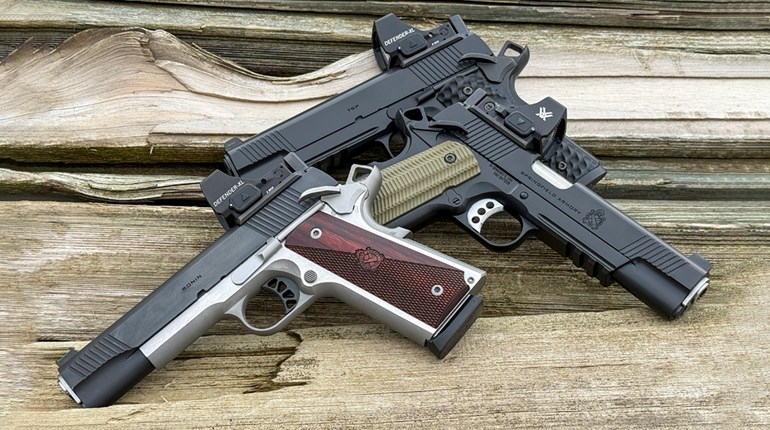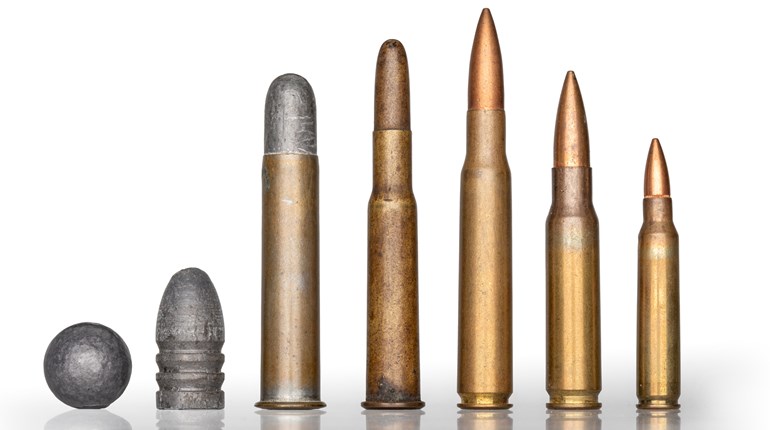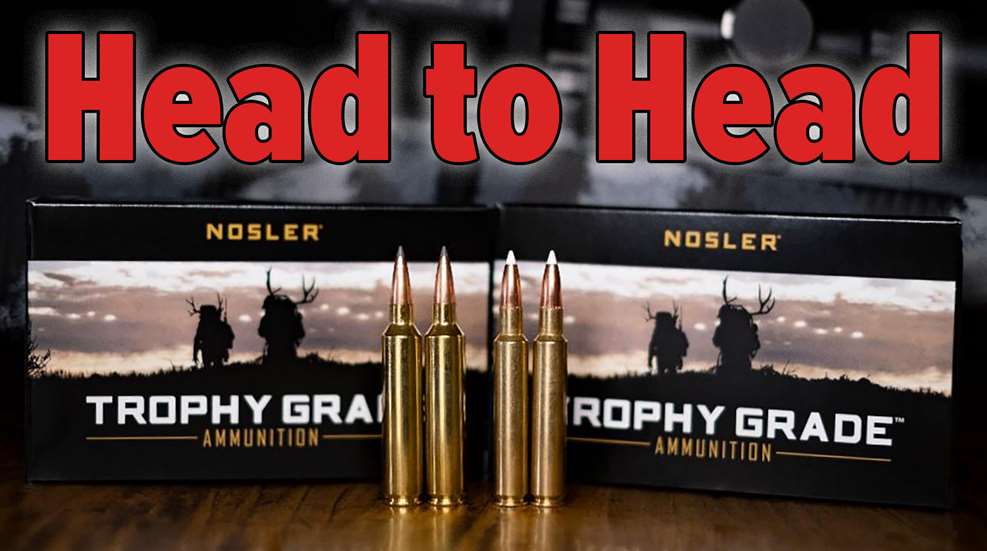
Among big-game hunters, Americans have always had an unabashed affinity for .30-caliber cartridges; but close on the .30s’ heels, in both performance and popularity, has been the 7mm bore. While the debate over 7mm and .308 diameter bullets will probably never cease, there is no denying that despite our American reluctance to adopt the metric system, 7mm cartridges are a fantastic all-around choice for any hunter pursuing our most common species.
Couple that with the American love of velocity, and you will find some of our most popular cartridges, including the .280 Remington and 7mm Remington Magnum. Both remain sound choices, and both are fully capable of taking all but the very largest big-game species around the globe. Some folks are more than happy with the most popular choices, but there are those who like that which is unique, looking to improve on an existing design, or to wring the most velocity out of a given set of parameters. The .280 Ackley Improved and the 28 Nosler are two of these, each with an appealing performance level. Let’s take a closer look at the two speedy Sevens.
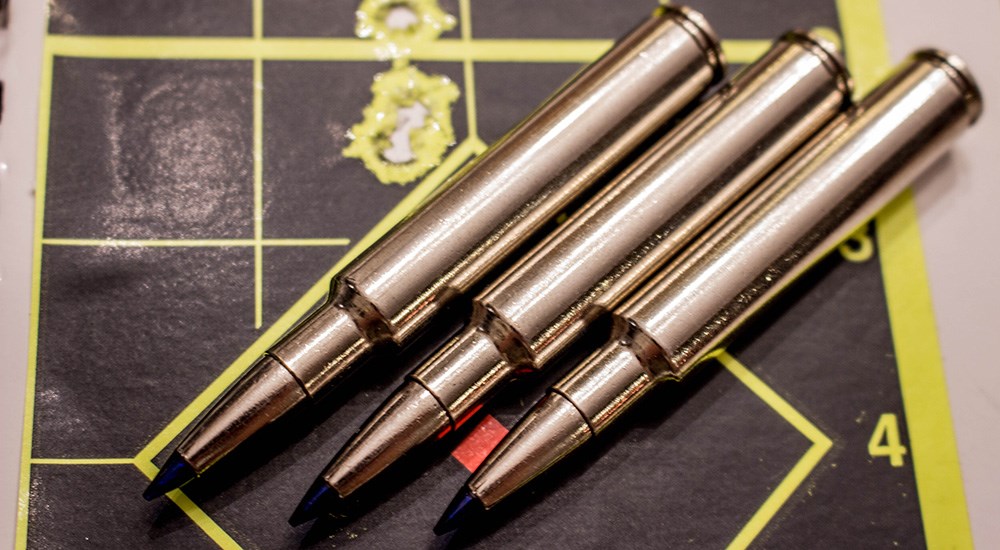
P.O. Ackley was a gunsmith and cartridge developer of great renown, with his Handbook for Shooters & Reloaders Vol. I & II holding a special place on the shelf of my hunting and shooting books. Ackley would tinker with existing cartridge designs, often taking out almost all the body taper and increasing the shoulder angle in order to increase case capacity and boost velocity. Of all his designs and experiments—and there were many—the one that offered the most significant and useable leap in performance was his .280 Ackley Improved. P.O. Ackley had developed a 7mm-06 wildcat before the .280 Remington was released, with colleague Fred Huntington developing the first true .280 Improved cartridge, albeit with a 35-degree shoulder. Ackley revisited the .280 Remington—that cartridge being the .30-03 Springfield necked down to hold .284-inch-diameter bullets—with the final Ackley variant changing the shoulder angle from the 17½ degrees of the Springfield family to a much steeper 40 degrees, and with the shoulder moved forward by 0.098 inches. The case length is shortened slightly, from the .280 Remington’s 2.540 inches to 2.525 inches, yet is still longer than the .30-06’s 2.494 inches.
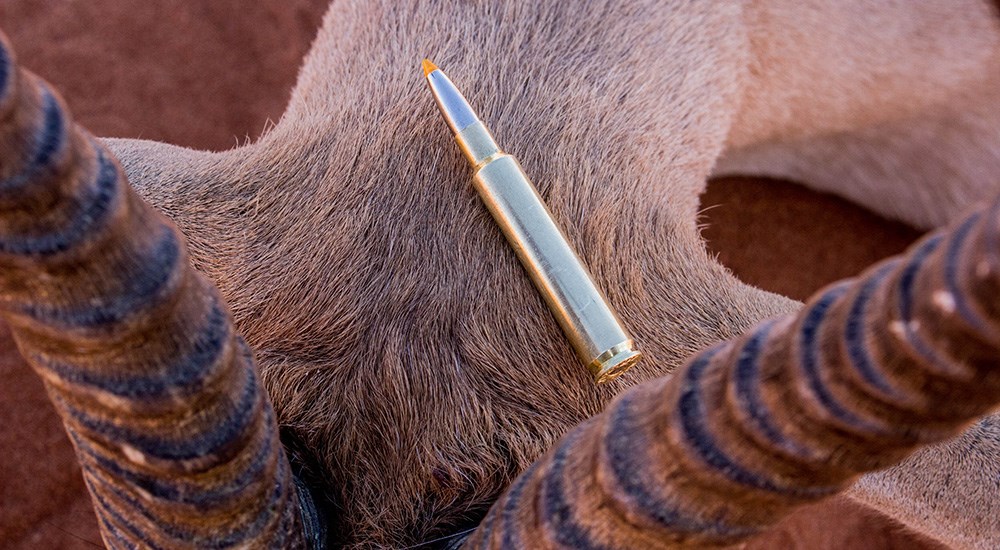
Ackley’s brainchild remained a wildcat until 2007, when Nosler legitimized the design and received SAAMI approval; though Kenny Jarrett’s famous “beanfield” rifles chambered in .280 AI were a sensation, despite the then-wildcat status. Factory ammunition is available from Nosler, Hornady and Federal, and all have proven to be seriously accurate in my rifle. Velocities are slightly lower than that of the 7mm Remington Magnum, though the smaller body diameter of the .280 AI will usually get one more in the magazine. I like Federal’s 155-grain Terminal Ascent load at 2930 fps; it shot under ¾-MOA and is tough enough for moose, elk and bear.
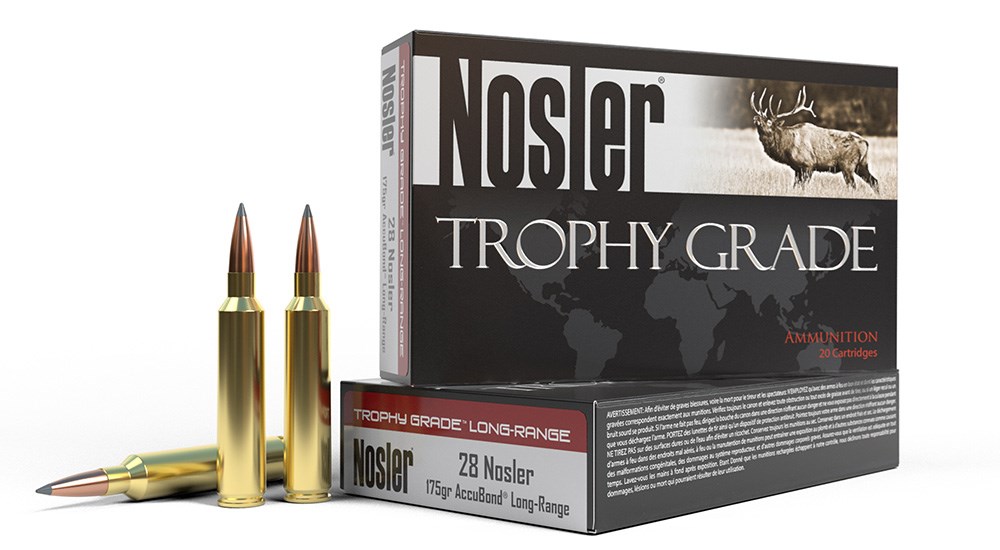
In 2015, Nosler released the second of their proprietary cartridges: the 28 Nosler. Building on the success of the previous year’s 26 Nosler, the 28 Nosler is a rimless, beltless case, distantly related to the .404 Jeffery, trimmed down to fit in a long-action receiver. The rim diameter has been reduced very slightly—presumably to fit in the common H&H Magnum bolt face—and much of the Jeffery’s taper has been removed. The slight 8-degree shoulder of the .404 Jeffery has been revised to a steep 35-degree angle, and case length is slightly longer than the ’06 family, at 2.590 inches. The 160-grain slugs have a muzzle velocity between 3175 and 3300 fps, depending upon the manufacturer and load, and show a definite improvement over the 7mm Remington Magnum and .280 AI. There are a good many people who have developed a distain for belted cartridges and the case stretching associated with that design, and the offspring of the .404 Jeffery—which can be taken to mean the Remington Ultra Mag family, the WSMs and Nosler’s stuff—offer a high case capacity alternative to the H&H case. For those who are students of cartridge design, you may notice a highly striking similarity between the Nosler line of cartridges and the now obsolete line of Dakota cartridges; both are based on a shortened .404 Jeffery case.
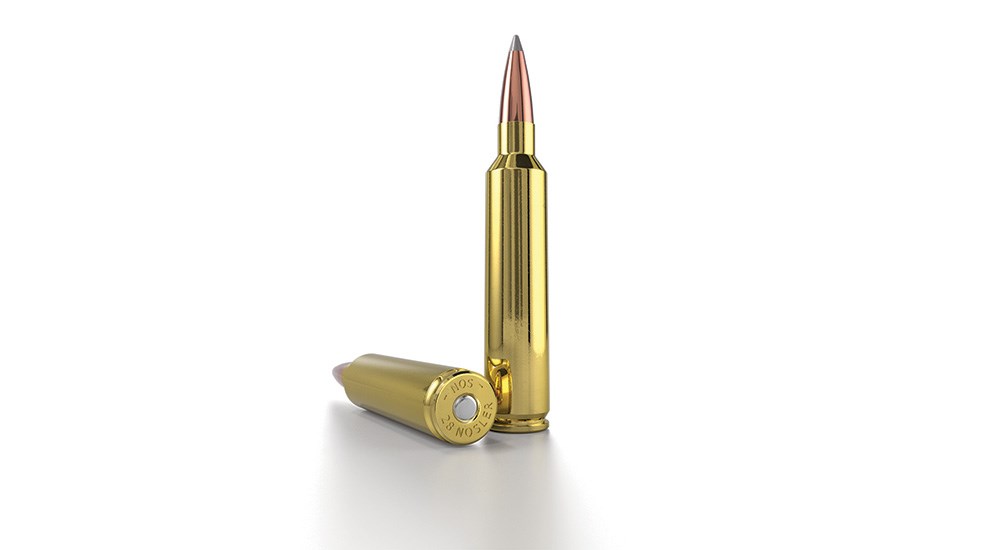
Comparing these two, you see that the cartridge length for both is 3.340 inches—the length which will fit comfortably in a long-action magazine—though the .280 AI has a smaller body diameter. The 28 Nosler has considerably more case capacity than does the .280 AI, and that shows in the velocity increase across the board. It also shows in a noticeable increase in recoil, though I must say that the 28 Nosler isn’t overly hard on the shoulder.
I suppose that any hunter will eventually ask themselves just how much velocity they actually need. I also understand that the answer to that question is extremely subjective, and that none of us need an excuse to buy a rifle chambered for a cartridge just because we like it. Both of these cartridges offer a flat trajectory, good wind deflection values and hold their energy well. Using the 162-grain Hornady Precision Hunter loads for both cartridges, you’ll see a muzzle velocity of 2850 fps for the .280 AI, and 3175 fps for the 28 Nosler. Zeroing both at 200 yards, the .280 AI will be 6.9 inches low at 300 yards, 19.8 inches low at 400, and 39.3 inches low at 500 yards. The 28 Nosler will strike 5.4 inches low at 300 yards, 15.5 inches low at 400 yards, and 30.9 inches low at the 500-yard mark. The .280 AI’s trajectory mimics the classic .300 Winchester Magnum loads, while the 28 Nosler flattens that arc appreciably.
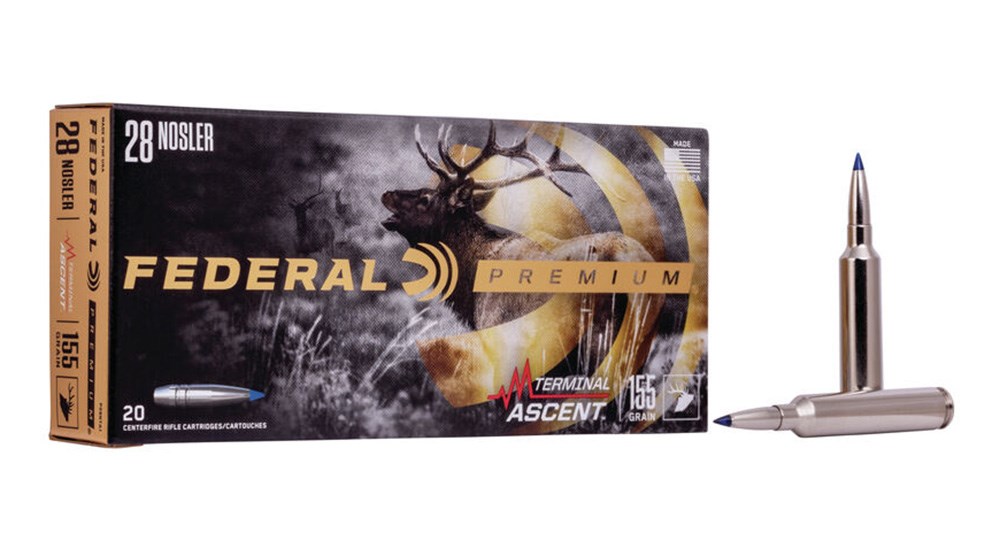
At 500 yards, which is just about my maximum limit for hunting, the .280 AI still retains over 1,600 ft.-lbs. of energy, while the 28 Nosler has over 2,400 ft.-lbs. But again, it’s back to that “how much do I need?” idea. Having spent more time with the .280 Ackley Improved than the 28 Nosler, I can attest to the effectiveness of the former at all sorts of ranges, and the 28 Nosler just improves on that situation. Both of these cartridges have been wonderfully accurate—with many loads printing three-shot groups of ½-MOA—and with factory ammo available from at least a couple of very reliable sources, they are not just resigned to the handloading community. Nosler, Hornady and Browning offer ammo for the 28 Nosler, and Nosler, Hornady and Federal produce .280 Ackley Improved ammo.
So, who gets the crown in this challenge? There are plenty of rifles to choose from in both calibers, and neither of them seems to be going away anytime soon. I feel the 28 Nosler is the most popular of the Nosler family, and the .280 Ackley Improved may have actually superseded the popularity of the .280 Remington, at least in the last five years or so. Comparing the price of the factory ammunition for the two cartridges, the .280 Ackley Improved tends to be a bit more affordable. Additionally, cases for the .280 Ackley Improved can be made from common .30-06 Springfield brass, by necking it down to .284-inch, and then fire-forming with a light powder charge. The same cannot be said for the 28 Nosler, as it would be a more difficult proposition, but not entirely impossible.
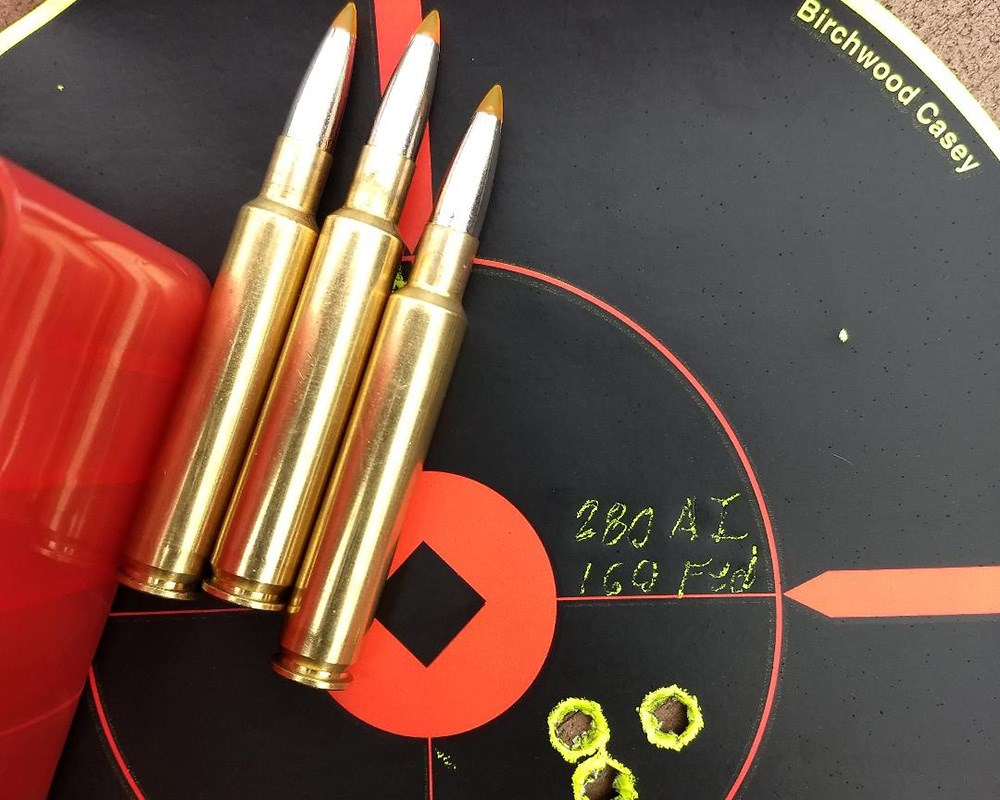
I’m going to choose the .280 Ackley Improved in this choice, with the caveat that I would happily grab a 28 Nosler and go hunting with it tomorrow. The .280 AI is a fantastic blend of case capacity in comparison to its bore diameter, and is extremely efficient. In my experience, you get 7mm Remington Magnum velocities with 80-85 percent of the recoil, in a compact package. The .280 Ackley Improved may just be my favorite 7mm cartridge as an all-around choice for big game hunting, at any range. It has served me well in North America and Africa alike, is easy to load for, easy on the shoulder and, in a pinch, you can use standard .280 Remington ammunition. Thank you Mr. Ackley, for all your tinkering, but especially for the .280 AI.
Looking for previous installments of our "Head to Head" series? We've got you covered.
• .22-250 Remington vs. .224 Valkyrie
• 9.3x62mm Mauser vs. .375 H&H Magnum
• .348 Winchester vs. .358 Winchester
• .35 Whelen vs. .375 H&H Magnum
• 7mm PRC vs. 7mm Remington Magnum
• 6.8 Western vs. .270 Winchester
• .218 Hornet vs. .218 Bee
• .338-06 A-Square vs. .35 Whelen
• .308 Winchester vs. .300 Winchester Magnum
• 6.5 Creedmoor vs. 6.5 PRC
• .22 LR vs. .22 WMR
• .30-06 Springfield vs. .300 Winchester Magnum
• .300 Wby. Mag. vs. 8mm Rem. Mag.
• 7mm Remington Magnum vs. 27 Nosler
• .257 Roberts vs. .25-06 Remington
• .300 H&H Magnum vs. .300 Winchester Magnum
• .308 Winchester vs. .338 Federal
• .222 Remington vs. .223 Remington
• .270 WSM vs. 7mm Rem. Mag.
• .22-250 Remington vs. .204 Ruger
• .25-06 Remington vs. 6.5 Creedmoor
• .444 Marlin vs. .45-70 Government
• 7x57mm Mauser vs. .280 Remington
• .300 Win. Mag. vs. .300 Wby. Mag.
• .375 Ruger vs. .375 H&H Magnum
• 7mm-08 Remington vs. .280 Remington
• .280 Remington vs. .280 Ackley Improved
• 7mm vs. .30 Caliber
• 6.5 Weatherby RPM vs. 6.5 PRC
• .338 Win. Mag. vs. .340 Wby. Mag.
• .300 RSAUM vs. .300 WSM
• .500 Jeffrey vs. .505 Gibbs
• 7mm RUM vs. .300 RUM
• .308 Winchester vs. 7mm-08 Remington
• 6.5 Creedmoor vs. .260 Remington
• .303 British vs. 8x57 Mauser
• .30-06 Springfield vs. All Other .30s
• .17 HMR vs. .17 WSM
• .450 Nitro Express vs. .470 Nitro Express
• 350 Legend vs. .35 Remington
• .280 Ackley Improved vs. 7mm Rem. Mag.
• .404 Jeffery vs. .416 Rigby
• .243 Winchester vs. 6mm Creedmoor
• .300 PRC vs. .300 Win. Mag.
• .30-06 Springfield vs. .270 Winchester
• 6.5 Creedmoor vs. 7mm-08 Remington
• 8x57 Mauser vs. .318 Westley Richards
• .358 Winchester vs. .350 Remington Magnum
• .22-250 Remington vs. .220 Swift
• .270 Winchester vs. .270 WSM
• .26 Nosler vs. 6.5-300 Weatherby Magnum
• .458 Win. Mag. vs. .458 Lott
• 7mm Rem. Mag. vs. .300 Win. Mag.
• .243 Winchester vs. 6mm Remington
• 7x57mm Mauser vs. 7mm-08 Remington
• .25-06 Remington vs. .257 Weatherby Magnum
• .338 Winchester vs. .375 H&H Magnum
• .30-30 Winchester vs. .35 Remington
• .257 Roberts vs. .250-3000 Savage
• .270 Winchester vs. .280 Remington
• .35 Whelen vs. 9.3x62mm Mauser
• .416 Rigby vs. .416 Remington Magnum
• .308 Winchester vs. .30-06 Springfield
• .22 Nosler vs. .224 Valkyrie
• .300 Win. Mag. vs. .300 WSM
• .223 Remington vs. .22-250 Remington













